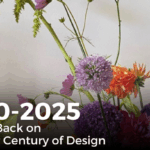 One of the best things about art class was being able to mix the paints and see all of the variations of color that formed from the controlled spills. Our eyes are naturally drawn to color and soak up the creative hues. Well, florists have the same opportunity every time an arrangement is started. Flowers come in a rainbow of colors so blending the shades and hues into a dazzling, eye-catching bouquet is truly an artform. Skilled floral designers are able to master this technique thanks to the color schemes found in the color wheel used by artists in a variety of genres.
One of the best things about art class was being able to mix the paints and see all of the variations of color that formed from the controlled spills. Our eyes are naturally drawn to color and soak up the creative hues. Well, florists have the same opportunity every time an arrangement is started. Flowers come in a rainbow of colors so blending the shades and hues into a dazzling, eye-catching bouquet is truly an artform. Skilled floral designers are able to master this technique thanks to the color schemes found in the color wheel used by artists in a variety of genres.
Primary, Secondary, and Intermediate (Tertiary) Inspiration
Most artists are familiar with the primary colors, secondary colors, and tertiary or intermediate colors. These colors form the basis of most other color schemes. The primary colors are red, yellow, and blue. These are the colors that can be blended or toned with achromatic hues to form every other color. Primary colors tend to be vivid and can therefore play a part in any arrangement needed a vibrant pop. These colors are often used alongside achromatic hues (white, black, gray) to please the eye. Secondary colors are orange, green, and violet. These are the colors formed from mixing one of the primary colors with another primary color.
 Tertiary colors are the colors between primary and secondary colors on the color wheel. Red-orange, red-violet, blue-violet, blue-green, yellow-green, and yellow-orange are the tertiary colors. These are formed from mixing a primary color with the closest secondary color on either side according to the color wheel. Tertiary colors are particularly appealing in fall flower arrangements and other occasions that require warm, muted bouquets.
Tertiary colors are the colors between primary and secondary colors on the color wheel. Red-orange, red-violet, blue-violet, blue-green, yellow-green, and yellow-orange are the tertiary colors. These are formed from mixing a primary color with the closest secondary color on either side according to the color wheel. Tertiary colors are particularly appealing in fall flower arrangements and other occasions that require warm, muted bouquets.
The Eight Main Color Harmonies
Understanding the basic colors and the basis of special colors is just the beginning in mastering the unique interweaving of colorful flowers into a dazzling arrangement. There are also various groupings of colors and their hues. Hue refers to the value of a color, i.e. the rich presence of a color as it applies to the gray scale. Basically, that’s a lengthy way to say how vivid or subtle a color is.
A color harmony is a grouping of specific hues and/or different values of a hue. There are essentially eight (8) color harmonies, though several have popular variations. These color combinations are:
- Achromatic: Color scheme referring to a grouping of colors without hue. This includes white, black, and any shades (values) of gray.
- Monochromatic: Grouping of various values of one hue; can include achromatic hues (white, black, gray.)
- Polychromatic: Color grouping of multiple hues which may be related or unrelated.
- Complementary: A pair of hues directly opposite each other and equidistant on the color wheel. Complementary colors and schemes have many variations such as near-complementary, split-complementary, analogous complementary, and double-complementary.
- Analogous: Color scheme referring to the grouping of three adjacent hues on the color wheel wherein one color dominates. Ex: deep red, dusky red, dark orange.
- Diadic: two colors that are two colors apart on the color wheel; may also be seen as Dyadic referring to a grouping of two.
- Triadic: grouping of three hues that are equidistant from one another on the color wheel.
- Tetradic: a grouping of four hues that are equidistant from one another on the color wheel; forms an equally spaced double-complement.
 Using these color schemes, a florist can easily create dimension and a colorful dynamic in flower arrangements. Knowing which colors appeal the most to the eye when paired with other colors is as much a matter of science as talent. While no one doubts the designer’s eye of a florist, using the color schemes of the color wheel provides another form of inspiration for floral designers.
Using these color schemes, a florist can easily create dimension and a colorful dynamic in flower arrangements. Knowing which colors appeal the most to the eye when paired with other colors is as much a matter of science as talent. While no one doubts the designer’s eye of a florist, using the color schemes of the color wheel provides another form of inspiration for floral designers.


 Find Your
Find Your 




Speak Your Mind